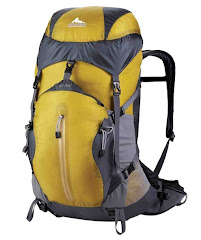I always like to tie a knot in the end of the rope that the climber is not tied into, or when rappelling, both ends of the rope. It gives me great confidence to know that by doing this all the time, I am highly unlikely to forget to do it when it becomes critical. I have friends who are knowledgeable climbers, but who have been lowered off the end of a rope and who have rappelled off the end of the rope, luckily without long term consequences.
Usually, "Closing the System" is a critical step when rappelling off of a multi pitch route, particularly when the route requires multiple rappels and exceeds the length of half your climbing rope. But, it is also important when nobody on the ground is present or aware to ensure that both ends of your rope are on the ground. While middle markers are handy, some ropes are not as long as advertised, the owner may have cut off a small portion of the rope due to wear or the middle of the rope can shift in the anchor.
Tying knots in the end of the rope is also a great safety mechanism when you are rappelling on two ropes at a time and they differ significantly in diameter. We often find that the difference in diameter can mean that one rope shifts a little while rappelling, making the ends a bit uneven.
For sure, you must remember to untie one of the knots on the rope end before pulling your rope, but at that point, you should be safely anchored into your next rap
 station or safely on the ground. As with all climbing, good communication with your partner is essential and can help double and triple check the safety of your systems.
station or safely on the ground. As with all climbing, good communication with your partner is essential and can help double and triple check the safety of your systems.Before you rappel, cover these basic safety checks. If you are unclear about how to safely rappel, don't be afraid to ask knowledgeable climbers for a verbal or visual safety check or reminder lesson. Also, this is a great skill to learn from a qualified climbing guide.
Basic Rappelling Safety Notes:
- Ask yourself if rappelling is necessary. Many of today's anchors are perfectly suitable for lowering upon cleaning.
- Catch your breath and take your time setting up your rappel. Double check your system.
- Tie a knot in both ends of your rope BEFORE beginning your rappel.
- Visually confirm both ends of your rope are on the ground or when possible, confirm with another climber that both ends have reached your destination.
- When possible, have another climber back up your rappel with a Fireman's Belay.
- Test that your belay device is functioning properly to rappel BEFORE detaching yourself from the anchor.
- Keep an eye on the rope below you as you rappel to look for the rope ends. Do not assume your partner is doing the same.
- Learn how to back up your rappel with a prussik or by wrapping the rope around your thigh should you need to go hands free during the rappel.
Climb Safe and Have Fun!!
Climb Globally, Shop Locally
Looking Glass Outfitters
69 Hendersonville Hwy
Pisgah Forest, NC 28768
828.884.5854
www.lookingglassoutfitters.com















1 comment:
Hi...
this blog is really amazing and provide me answers to all my questions. This is really informative and I will for sure refer my friends the same. Thanks so much...
Post a Comment